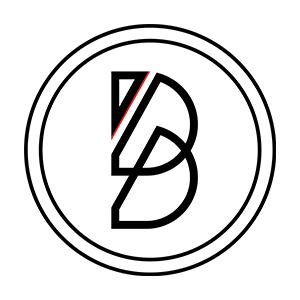Internal linking is a foundational SEO tactic that often goes unnoticed, yet it plays a vital role in driving organic traffic and improving site usability. By connecting related content within your website, internal links help users navigate more easily and enable search engines to crawl your pages efficiently. Whether you’re launching a new site or optimizing an existing one, mastering internal linking can significantly enhance your site’s visibility and authority.
Key Takeaways
- Internal links guide users and search engines, improving site navigation and crawlability.
- A strategic link structure boosts authority flow and supports your website’s content hierarchy.
- Optimized anchor text and natural placement enhance clarity, engagement, and SEO performance.
- Updating old content with new links and avoiding over-optimization keeps your structure current and effective.
- Regular audits help identify orphaned or broken links, ensuring a smooth, high-performing internal network.
Understanding Internal Linking and Its SEO Significance

Internal links are essential for SEO because they guide both users and search engines through your website. These links help organize content and support discoverability. By connecting related pages, internal links promote longer sessions and a better user experience. For search engines, internal links provide clear paths for indexing and ranking. A well-structured internal link strategy builds site authority and improves content visibility.
Defining Internal Links and Their Purpose
Internal links connect various pages within your website to guide users toward relevant content. They help visitors find supporting resources, answers, or services quickly. These links also encourage longer visits by creating natural journeys through your site. From an SEO perspective, they help distribute ranking signals across key pages. Linking newer content to high-performing pages increases authority flow. The result is better visibility for pages that might otherwise go unnoticed. These purposeful connections also improve navigation and reduce friction in the user experience.
How Internal Links Differ From External Links
Internal links keep traffic and engagement within your own site, whereas external links send visitors elsewhere. While external links reference outside sources, internal links strengthen your site’s structure. They organize your content, improve crawlability, and show how topics relate. Internal links also consolidate your site’s authority by directing attention to priority pages. Unlike external links, they support a consistent user experience across your domain. This distinction is key for planning on-page SEO. A thoughtful balance of both link types is essential, but internal links remain fully under your control.
The Direct Impact of Internal Links on Search Engine Crawling and Indexing
They create crawl paths that allow search engines to index content efficiently. Pages buried too deep in your structure may get overlooked without these links. By shortening crawl depth, internal linking ensures more pages are seen and understood. This improves the frequency and accuracy of search engine visits. It also helps reduce orphaned pages, which can drag down site performance. Clear pathways enhance discoverability and help every page play a role in your SEO strategy. The result is better coverage, faster indexing, and a stronger sitewide presence in search.
How Internal Linking Contributes to Website Hierarchy and Authority Distribution
Internal links define your site’s structure, highlighting which pages are most important. They pass link equity from popular pages to deeper content, elevating visibility. High-authority pages, such as service hubs or core blogs, boost the rankings of linked content. This hierarchy supports better organization and stronger topic clustering. Visitors are guided through clear paths that reflect your strategic goals. For search engines, this structure makes it easier to assess page relevance. Proper link distribution also helps evenly spread engagement across your content. That balance is key for long-term SEO growth.
Developing a Strategic Approach to Internal Linking

A successful internal linking strategy begins with a clear understanding of your content structure. By mapping out how users interact with your pages, you can guide them to deeper engagement. This approach ensures newer or lower-ranked content gains visibility. The strategy must grow alongside your website to remain effective. Planning link flow and connection points supports lasting SEO benefits.
Planning Your Website Structure for Optimal Link Flow
Start by outlining your website’s hierarchy through a sitemap or visual model. Define which pages are top-level hubs and which serve supporting roles. This will help you decide how users should travel through your content. Categorizing pages into primary and secondary levels streamlines link flow. Each page should have a logical path to and from other relevant content. This setup reduces crawl depth and boosts discoverability. Organizing your structure from the start sets the stage for stronger SEO outcomes. A connected framework allows for long-term scalability and growth.
Identifying Key Pages for Strategic Internal Linking
Key pages are the cornerstone of your website and often include high-traffic or high-converting content. Use these pages to support and elevate other valuable assets. Linking from these anchors can increase exposure to newer or related topics. Consider service pages, case studies, or evergreen blog posts as primary targets. Identify which pages consistently perform well and distribute link authority from there. Strategic linking expands traffic across your domain. This visibility improves relevance signals across your entire site. Prioritize pages that align with your SEO and business goals.
Creating Topic Clusters and Pillar Pages for Semantic SEO
Topic clusters group related content under a core theme, led by a central pillar page. This structure signals to search engines that your content is comprehensive. Each pillar connects to subtopics, offering a full view of the subject. For example, a main page on “SEO Strategy” may link to detailed articles on linking, metadata, and audits. These clusters improve semantic relevance and support targeted ranking. They also guide users through logically organized content. Strong clusters increase authority and reduce bounce rates. Pillar-based linking reinforces your expertise on key topics.
Determining the Ideal Number of Internal Links Per Page
There’s no fixed number of internal links per page, but moderation is crucial. Aim for five to fifteen links, depending on the length and intent of the content. Overloading a page can distract users and confuse crawlers. Too few links might isolate valuable content from the rest of your site. Each link should be meaningful and related to the context. Focus on helping users find more information, not just hitting a number. Well-balanced linking supports crawl efficiency and user journey optimization. Strategic quantity leads to stronger performance than scattered placement.
Implementing Internal Linking Best Practices Effectively

Strong internal linking involves more than just adding links—it’s about structure, clarity, and value. Using descriptive anchor text, keeping links natural, and balancing placement makes a difference. Tailor each link to serve the reader’s interest and boost SEO simultaneously. Your internal linking should reflect your site’s most important themes. Executing these best practices builds trust, supports indexing, and improves flow.
Crafting Optimized Anchor Text for SEO and User Clarity
Anchor text should clearly describe the destination content to both users and search engines. Avoid generic terms and instead use phrases that relate to the target topic. A phrase like “learn how internal linking boosts SEO” provides more context than “click here.” Descriptive anchor text improves click-through rates and ranking signals. Consistent phrasing across similar content helps reinforce topic relevance. Anchor variety keeps your site dynamic and avoids repetitive linking patterns. Effective anchor text balances readability with search value. Make it useful for both people and algorithms.
Ensuring Natural Placement of Internal Links Within Content
Internal links should flow within the content naturally, not forced into unrelated sections. Readers should feel the link adds value to the paragraph or concept being discussed. Placement near relevant keywords helps connect users to deeper information. Avoid inserting links in the same spot across all pages, as this feels repetitive. Mix up your structure to match the context of each post. Quality placement boosts retention and prevents user fatigue. Content should still make sense even if the link is removed. Seamless integration reflects a thoughtful approach to content design.
Utilizing Different Types of Internal Links: Navigational, Contextual, and Footer
Use internal links in multiple formats to build a comprehensive structure. Navigational links help users access key pages from menus or sidebars. Contextual links in body content guide users to related articles or services. Footer links often serve as secondary navigation or access to broader categories. Each link type serves a specific role and should be placed intentionally. Avoid cluttering any one section with too many links. Distribute them throughout your site for balance. This layered approach ensures users can easily explore your content. It also provides structure and signals value to search engines.
Best Practices for Linking to New Content and Updating Old Links
Every time you publish new content, add internal links pointing to it from older pages. This accelerates visibility and helps search engines find new material. Likewise, updating older content with links to fresh pages keeps your site dynamic. It ensures that important content continues to evolve and gain exposure. Regular updates also support content accuracy and engagement. Linking new and old content strengthens your topical authority. It prevents useful pages from becoming isolated or forgotten. This habit also supports a healthier, more connected site structure.
Using Dofollow Links for Internal Link Equity Distribution
Internal links should use the default dofollow attribute to pass link equity effectively. This allows search engines to understand page relationships and prioritize accordingly. Avoid unnecessary use of nofollow unless directing traffic away from indexed content. Use dofollow links strategically to boost underperforming pages or support key topics. Monitoring your linking pattern helps avoid over-concentration of authority. Spread link value evenly across high-importance and supplementary content. Proper use of dofollow links strengthens internal SEO without relying on external backlinks. It keeps your authority circulating within your own domain.
Avoiding Common Internal Linking Mistakes for Better SEO Performance

Even a strong strategy can be weakened by preventable missteps. From forgotten pages to broken links and repetitive anchor text, each error affects SEO outcomes. Staying vigilant about these mistakes keeps your structure healthy and consistent. Regular audits and content reviews help maintain a seamless internal linking network. A clean, user-friendly architecture supports search success and site scalability.
Recognizing and Fixing Orphaned Pages Lacking Inbound Links
Orphaned pages are hard for both users and crawlers to find, reducing their SEO potential. Regularly audit your content to identify and reintegrate these pages. Link them from relevant, visible pages to bring them back into circulation. Every valuable page should connect to at least one other piece of content. Adding contextual links helps create a more comprehensive and accessible experience. This practice ensures your entire site contributes to ranking goals. It also increases user discovery of deeper resources. No page should be left without a pathway.
Preventing Over-Optimization and Keyword Stuffing in Anchor Text
Repeating the same keyword-rich phrases in anchor text across your site can trigger negative SEO responses. Balance is key—use varied and relevant phrases that still reflect the destination content. Avoid turning every internal link into a ranking opportunity. Instead, prioritize user value and natural integration. Rewriting redundant or overused anchors refreshes your strategy. A healthy mix of branded, descriptive, and contextual anchors works best. Focus on readability and intent. This keeps both users and algorithms happy.
Addressing Broken Internal Links and Redirect Chains
Broken links interrupt the user experience and prevent smooth crawling. Regular audits can identify outdated URLs, missing pages, or redirected links. Fix them by updating the target URLs or removing irrelevant links. Use tools that scan for errors and show where updates are needed. Keeping your site free from broken connections helps retain link equity. It also signals a trustworthy and well-maintained website.
Frequently Asked Questions
What exactly are internal links, and why are they pivotal for SEO?
Internal links are hyperlinks connecting pages within the same website. They are crucial because they help search engines crawl and index your content efficiently, distribute page authority, and improve user navigation, which leads to enhanced organic search performance and improved user engagement.
How can internal linking improve website hierarchy and authority distribution?
Internal linking establishes a clear roadmap of a website’s structure by connecting high-authority pages to less prominent ones. This flow of link equity ensures that important pages receive the necessary authority, improving overall visibility and rankings while also guiding users through relevant content pathways.
What tools are recommended for analyzing internal link structures?
Tools like Ahrefs, SEMrush, Moz, and Google Search Console provide comprehensive insights into link distribution, broken links, and optimization opportunities. These tools help identify orphaned pages and measure the performance impact of internal linking on search rankings and traffic.
How do I determine the optimal number of internal links per page?
There is no fixed rule, but a balanced approach suggests using between five to fifteen internal links per page. It depends on the page length and content complexity, ensuring there are enough links to guide readers without overwhelming them or diluting link equity.
What are the best practices to avoid internal linking mistakes?
Best practices include regularly auditing for broken and orphaned links, avoiding keyword stuffing in anchor texts, using varied and descriptive anchor texts, and ensuring excessive linking does not lead to dilution of link value. This creates an optimized, user-friendly internal linking structure that supports sustained SEO performance.
Conclusion
A well-executed internal linking strategy serves as the connective tissue of your website’s SEO framework. It improves crawlability, strengthens content relationships, and ensures that no valuable page goes unnoticed. By focusing on clear structure, natural link placement, and ongoing audits, businesses can elevate their search performance and provide a more intuitive experience for users. Consistent internal linking is not just good practice—it’s a long-term investment in the health and success of your digital presence.
